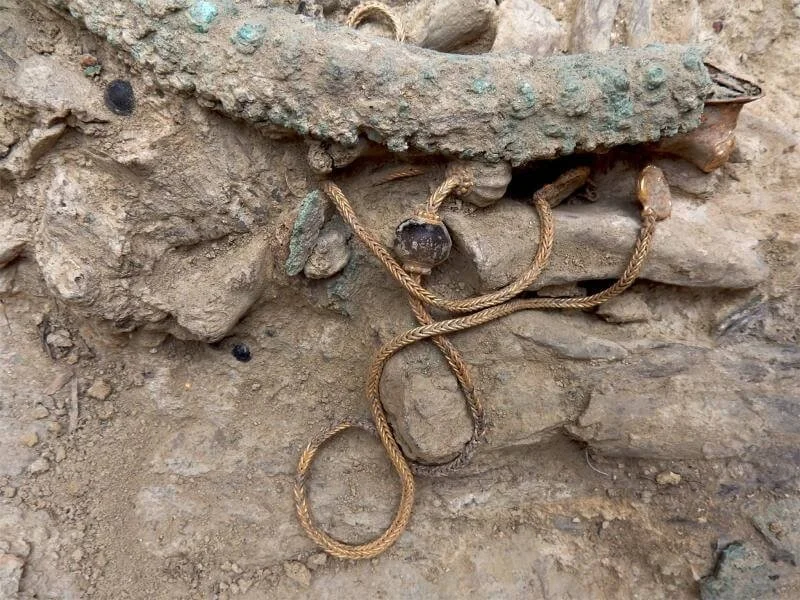The depiction of Alexander the Great has sparked much debate regarding his physical appearance, especially concerning the color of his hair. The three depictions we share in this article, along with others from European artistic traditions, add complexity to this discussion. Let us examine the matter in detail, drawing upon both ancient sources and later representations.
Depictions of Alexander
Fresco from the Tomb of Philip II in Vergina: The first image, as you mentioned, is believed to depict Alexander, and it is particularly important as it comes from his lifetime. In this depiction, Alexander’s hair appears brown, with a natural shade that does not suggest a blond color. This representation is significant as it was created by an artist who lived in the Macedonian court, offering a likely accurate portrayal of his appearance.
The Alexander Mosaic (House of the Faun, Pompeii): This mosaic depicts Alexander during the battle with Darius III and was created several centuries after his death. Although the hair color is somewhat difficult to interpret due to the mosaic technique, it seems that his hair is brown, further supporting the idea that Alexander was not blond but rather had brown hair with perhaps some lighter tones.
Wall Painting from Triclinium 20: The third image, which presents Alexander during his wedding to Roxane, was created during the Neronian period (54-68 AD), centuries after Alexander’s death. Here, too, Alexander’s depiction with brown hair aligns with other ancient sources.
Ancient Sources on Alexander’s Hair
Ancient written sources do not provide a clear description of Alexander’s hair color, but there are some clues. Plutarch, for instance, mentions that Alexander’s hair had a slightly reddish tone ("xanthochrous"), which could be interpreted as a form of light brown or golden rather than pure blonde.
Later European Representations
Later depictions of Alexander during the Middle Ages, the Renaissance, and the Enlightenment often portray him with blond hair. This likely stems from cultural reasons and ideological projections. In Western art, blond characters were often symbols of heroism, enlightenment, and virtue. Thus, blondness became associated with the idealized figure of Alexander, particularly during the Renaissance, when artists drew inspiration from the ancient Greek classical tradition but filtered it through their own artistic and political ideas.
The question of Alexander the Great’s hair color remains open to interpretation. However, ancient sources and depictions from the Hellenistic and Roman periods tend to show him with brown hair, while later European artists, influenced by their own ideological views, often portrayed him as blond. Examining these varied depictions offers an interesting perspective on how the historical image of Alexander changes according to the cultural and political context of each era.












